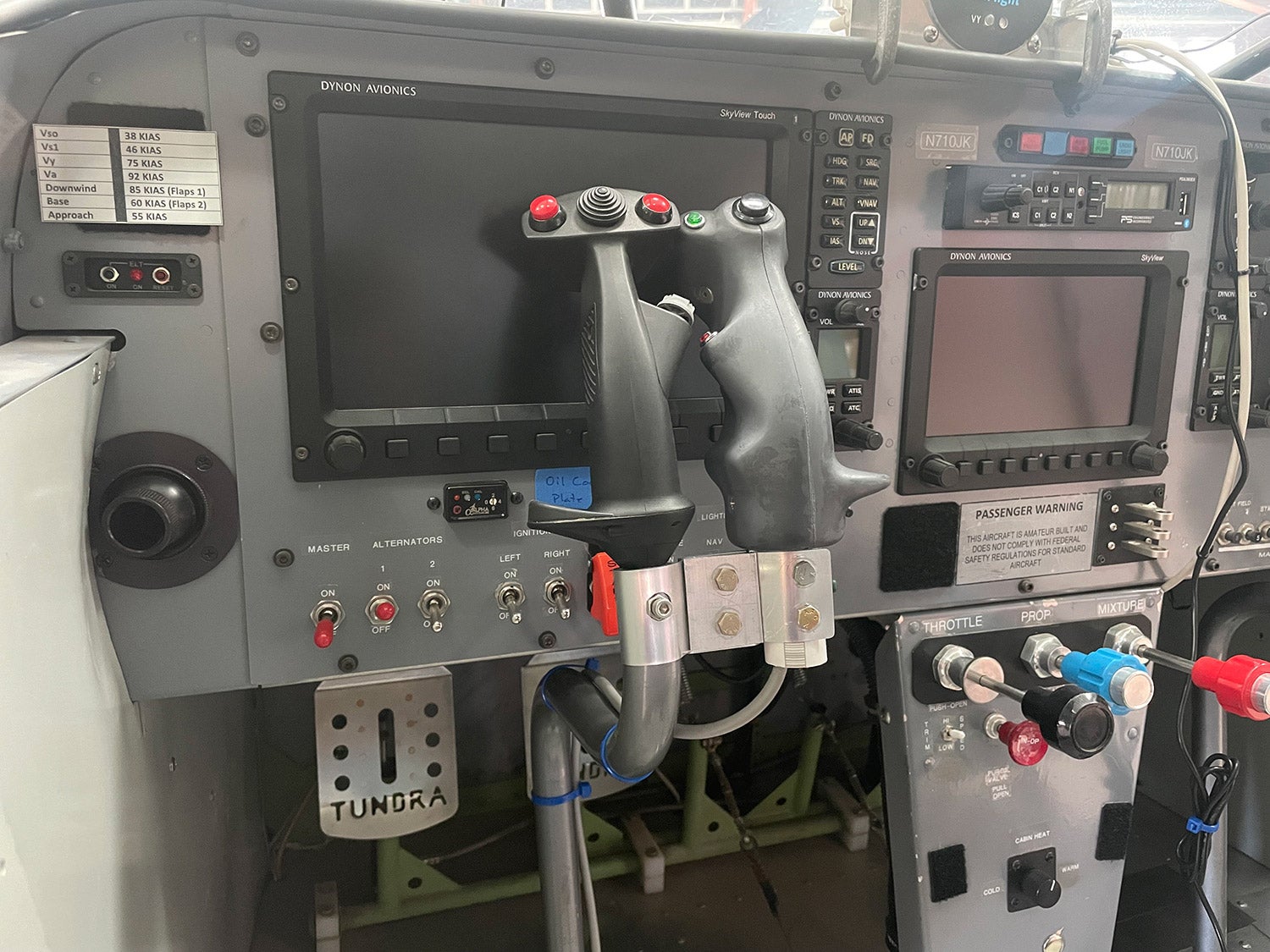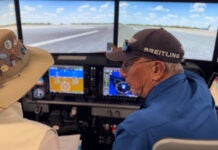No, you have not entered the magical realm of a circus freak show—this really is exactly what it looks like—a control stick with two grips on the top! And while the story behind it might be interesting, it certainly rise to the level Barnum and Bailey hyperbole.
As part of the EAA’s Founder’s Innovation Prize competition, a new idea for presenting Angle of Attack information to pilots was thought up by Jack Horner, founder of FeelFlight stick grips. While lots of AoA systems present relative angle of attack information via sight and/or sound, none had tried to tackle the sense of touch. Sure, pilots have been trained for years to recognize the shake and rumbling of an impending stall, but there was nothing to tell the pilot if their AoA was perfect for Vx, or Vy—in addition to telling them that they were near the stall. So Horner came up with a stick grip that includes little thumpers aimed at three of the pilot’s fingers. Depending on where you are flying in the speed range, you get a little tap on the appropriate finger. In addition, the system will give a tap for a slip or skid condition on the appropriate side of the hand.
How does it work? Well – in order to give you the whole story, we needed to install the system in one of our airplanes. The system is just invasive enough, however, that a permanent installation was going to take considerable time, and we also felt that we might want to pass this gadget around a bit, so instead of removing the grips (and wiring) from one of our airplanes, we built a bracket to pony it up alongside the aircraft’s regular pilot stick. Appropriate safety reviews have been performed, and full stick motion without interference was ensured. The angle of attack vane, designed to be installed on an inspection plate under a wing, was attached to a bracket on the jury strut of this high-wing, and wiring run along the struts and safety-taped inside the cockpit. The indicator/control box was mounted to a bracket clamped to the glare shield—and she’s ready to test!
How does it work? We haven’t flow it yet, but we’ll let you know in a complete review in and upcoming issue Kitplanes magazine.















My father flew the F-102 and he said it had two sticks. One for flying and one for manipulating the radar.
Looks like a solution without a problem.
Matthew Beat me to it, I was wondering of that aircraft was channeling its inner F-106.
Here was me thinking it was April 1st.
Molded control grips have a right handed bias. Being a left handed person, I am fairly comfortable living in a right handed world but extreme protrusion are annoying when I forget and fly left handed. I recently took some transition training in another aircraft which during the first hour, I found myself switching hands because of the unfamiliarity of the controls and cockpit layout. The bias in the molded grip was a distraction and a hazard. I have arrived at the point in building my aircraft where a molded grip would be nice or even if I should place the throttle quadrant on the right instead of the left is weighing on my mind. I expect if I decide to sell it later having a cockpit set up for a lefty would be a major obstacle for resell. Placing a right handed person in a left handed world is comical to watch. . Not so for left handed in a right handed world. We have adapted. Nevertheless it’s my airplane and I should build it for my bias and comfort. To the point an ambidextrous designed stick grip would be a nice addition. Control yokes fit both hands so why is a double grip stick so foreign an idea? To a left handed person, it makes perfect sense.
William – I totally sympathize with you in that the world is clearly right-handed biased. The good news is that almost all of the high-end stick grips come in both left and right handed models, because you need one for each side of a side-by-side, and you fly with a different hand depending on which seat you’re occupying. Most pilots that fly a lot of aircraft become more or less ambidextrous for the actual flying task. The other good news is that there are a variety of symmetrical stick grips out there (usually foam cylinders with a plastic top for switches) that are intended to be ambidextrous. However, once the switches are set up, they tend to be right or left hand biased.